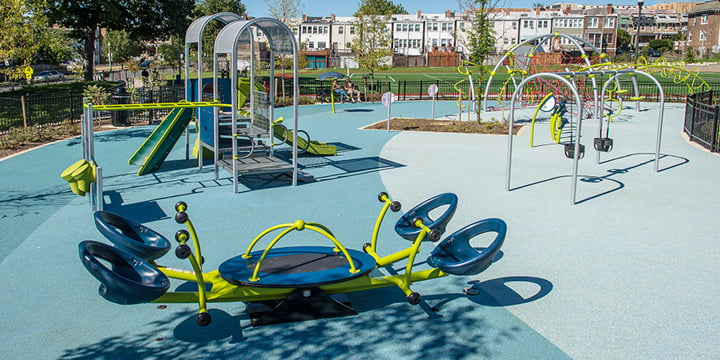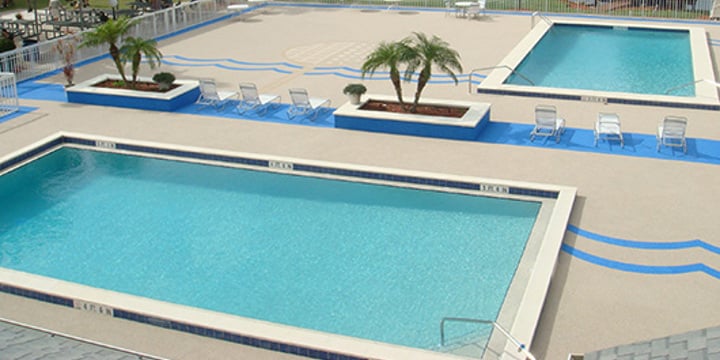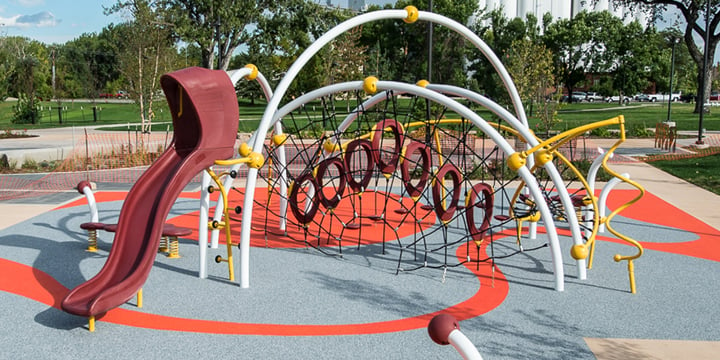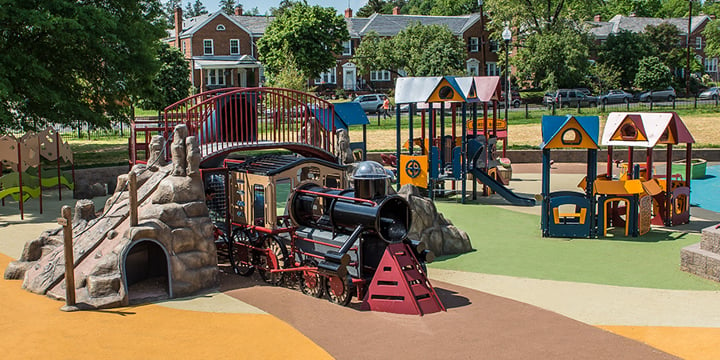Safety Surfacing
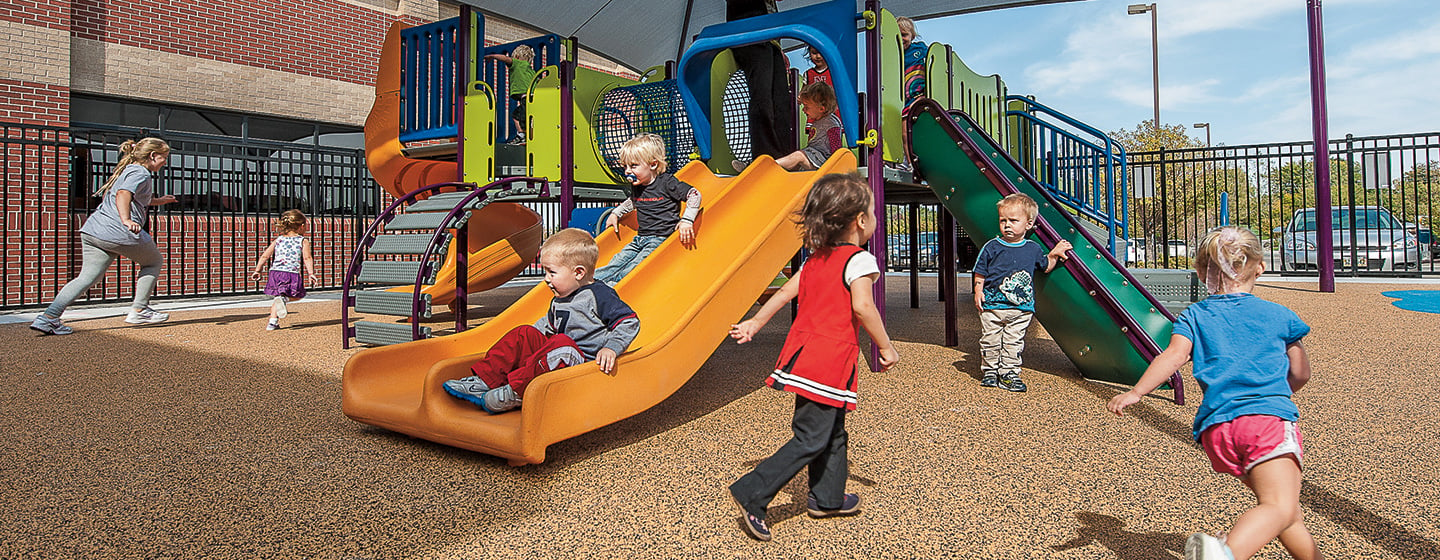
Make playground safety a top priority! Learn how you can reduce injuries by installing and maintaining shock-absorbing playground safety surfacing.
Surfacing might not be the first thing you think of when designing a playground, but its importance can't be overstated. It plays a crucial role in ensuring the well-being of children and promoting a safe play environment. It provides shock-absorption protection against potential injuries, minimizing the risk of accidents and their associated consequences.
Your playground flooring acts as a cushioning layer, reducing the impact of falls and mitigating the severity of injuries. Falls and accidents are inevitable when children are engaged in the climbing, hanging and jumping that playgrounds invite. However, with the presence of appropriate safety surfacing, the impact of a fall is significantly reduced, minimizing the likelihood of injuries.
Unitary, or rubberized surfacing in particular, helps create an inclusive play environment. Such pour-in-place or bond-in-place surfacing offers better accessibility, allowing wheelchair users or those with mobility devices to navigate the playground more easily. This fosters inclusivity in your playground, where all children can engage in play without limitations or barriers.
Surfacing also impacts the aesthetics and maintenance of your playground. Apart from its protective properties, it can enhance the visual appeal of the space, creating an inviting atmosphere for children. Loose-fill surfaces like wood chips require more regular maintenance to sustain their safety standards and appearance while unitary surfacing has a much lower maintenance requirement.
Learn about the types, costs and benefits of playground surfacing by exploring the options below.
